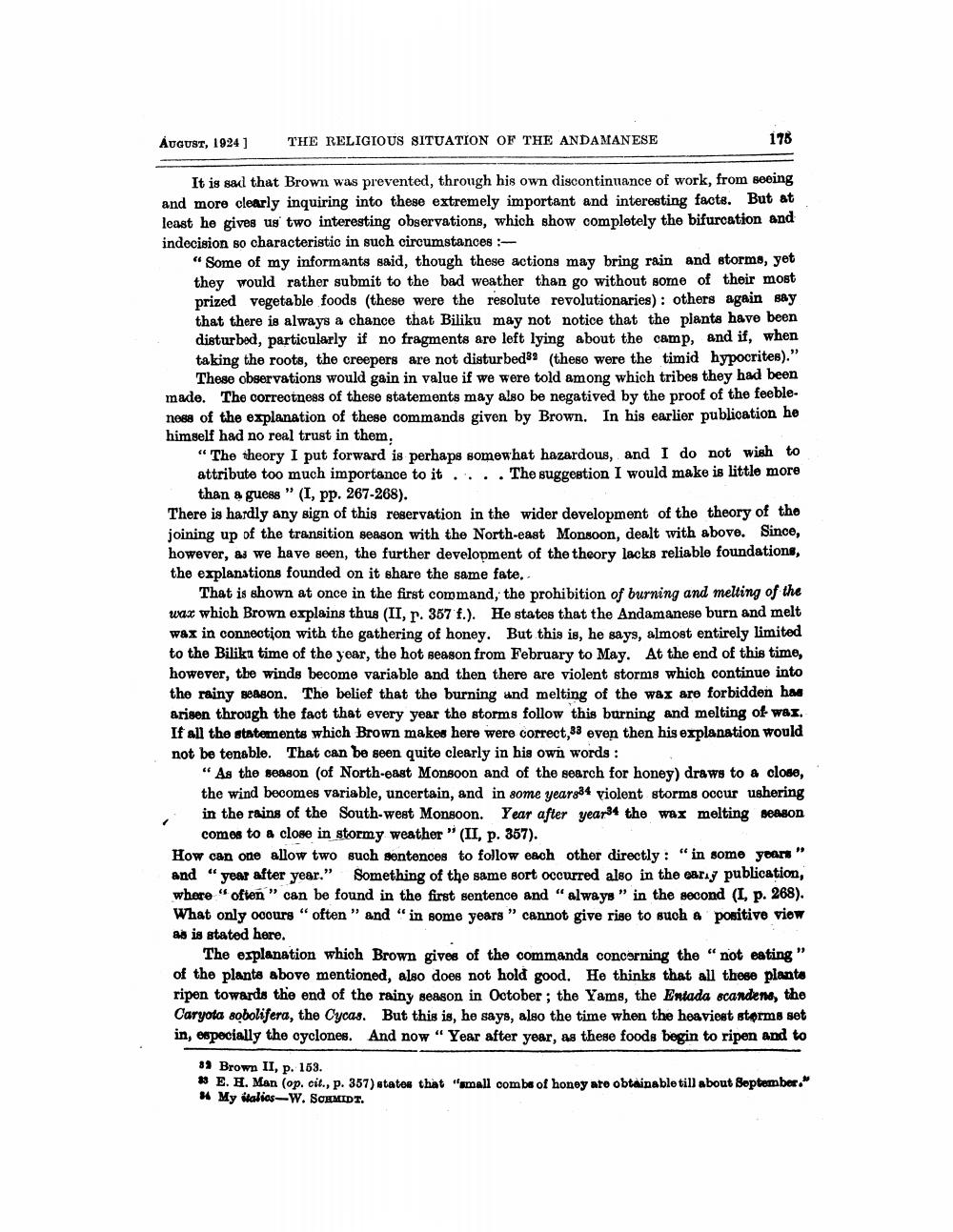________________
August, 1924 ]
THE RELIGIOUS SITUATION OF THE ANDAMANESE
178
It is sad that Brown was prevented, through his own discontinuance of work, from seeing and more clearly inquiring into these extremely important and interesting facts. But at least he gives us two interesting observations, which show completely the bifurcation and indecision so characteristic in such circumstances
“Some of my informants said, though these actions may bring rain and storms, yet they would rather submit to the bad weather than go without some of their most prized vegetable foods (these were the resolute revolutionaries): others again say that there is always a chance that Biliku may not notice that the plants have been disturbod, particularly if no fragments are left lying about the camp, and if, when taking the roots, the creepers are not disturbed32 (these were the timid hypocrites)."
These observations would gain in value if we were told among which tribes they had been made. The correctness of these statements may also be negatived by the proof of the feeblenogs of the explanation of these commands given by Brown. In his earlier publication he himself had no real trust in them,
“The theory I put forward is perhaps somewhat hazardous, and I do not wish to attribute too much importance to it.... The suggestion I would make is little more
than & guess" (1, pp. 267-268). There is hardly any sign of this reservation in the wider development of the theory of the joining up of the transition season with the North-east Monsoon, dealt with above. Since, however, as we have seen, the further development of the theory lacks reliable foundations, the explanations founded on it share the same fate.
That is shown at once in the first command, the prohibition of burning and melting of the was which Brown explains thus (II, r. 357 f.). He states that the Andamanese burn and melt wax in connection with the gathering of honey. But this is, he says, almost entirely limited to the Bilika time of the year, the hot season from February to May. At the end of this time, however, the winds become variable and then there are violent storms which continue into the rainy season. The belief that the burning and melting of the wax are forbidden has arisen through the fact that every year the storms follow this burning and melting of wax. If all the statements which Brown makes here were correct,33 even then his explanation would not be tenable. That can be seen quite clearly in his own words:
"As the season (of North-east Monsoon and of the search for honey) draws to a close, the wind becomes variable, uncertain, and in some year334 violent storms occur ushering in the rains of the South-west Monsoon. Year after year84 the wax melting season
comes to a close in stormy weather" (II, p. 357). How can one allow two such sentences to follow each other directly : “in some years" and "year after year." Something of the same sort occurred also in the earıy publication, where often " can be found in the first sentence and "always" in the second (I. p. 268). What only ooours" often " and " in some years" cannot give rise to such a positive view as is stated here.
The explanation which Brown gives of the commande conosrning the "not eating" of the plants above mentioned, also does not hold good. He thinks that all these plante ripen towards the end of the rainy season in October ; the Yams, the Entada scandens, the Caryota sobolifera, the Cycas. But this is, he says, also the time when the heaviest storms set in, especially the oyclones. And now " Year after year, as these foods begin to ripen and to
83 Brown II, p. 163. * E. H. Man (op. cit., p. 367) statou that "small com ba of honoy sto obtainable till about September." #4 My stalios-W. SCHMIDT.




